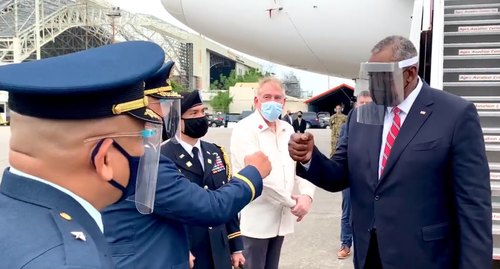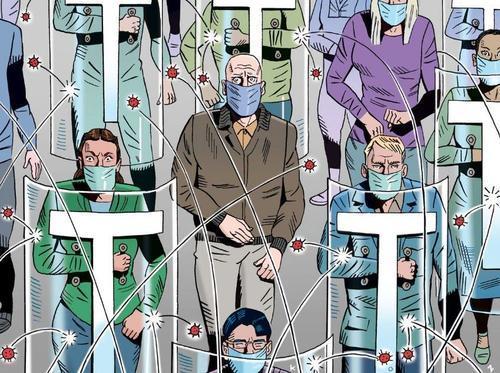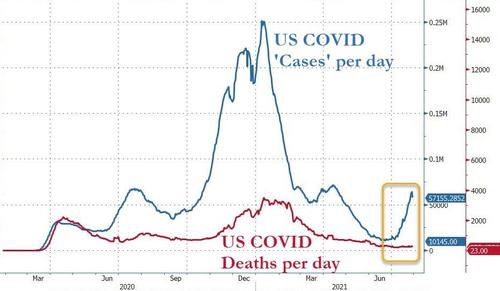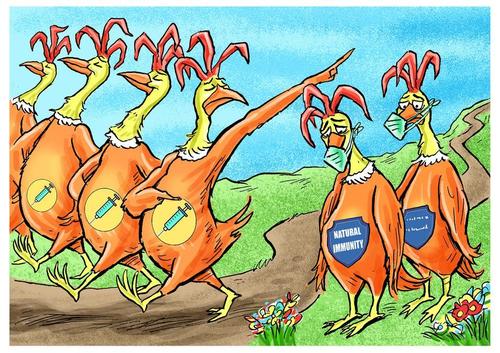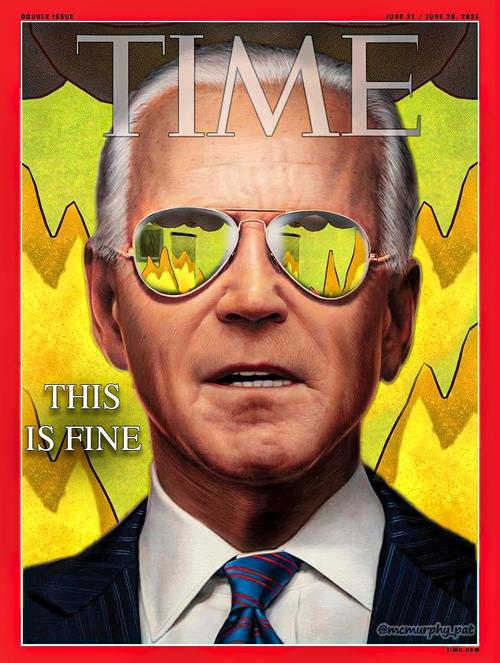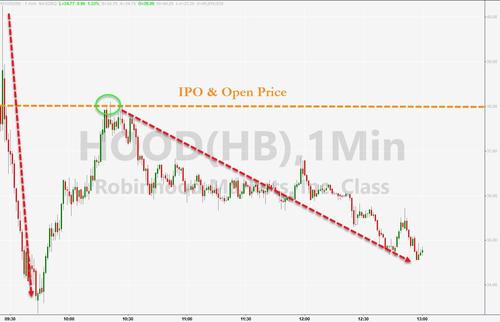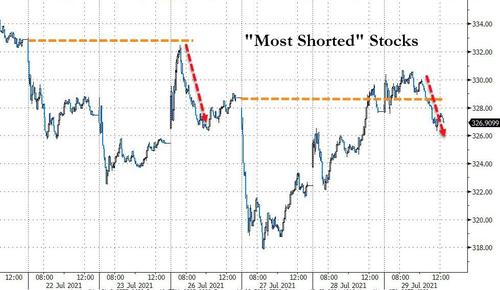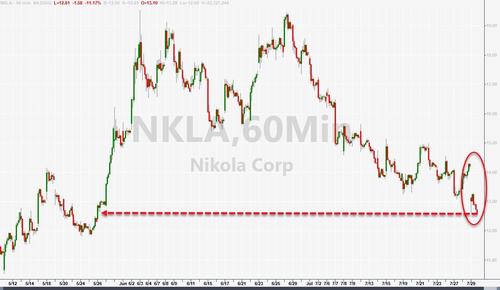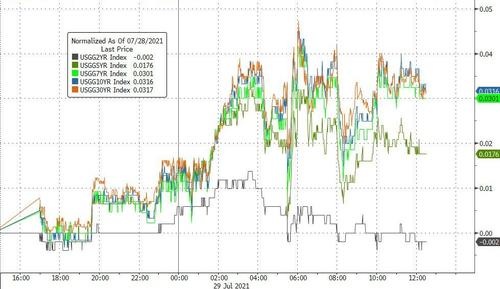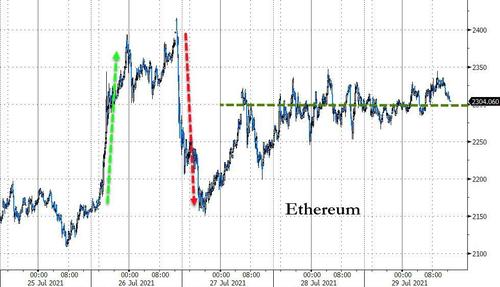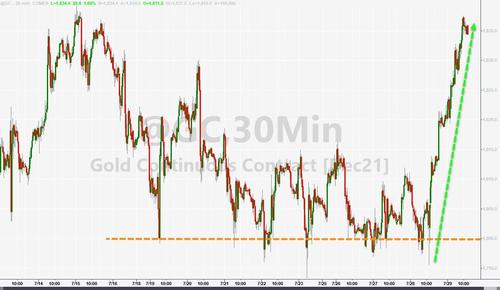Two and a half months ago, when the Centers for Disease Control and Prevention (CDC) began telling people vaccinated against COVID-19 that they generally did not need to wear face masks in public places, CDC Director Rochelle Walensky said the new advice was based on two factors. First, vaccinated people were rarely infected by the coronavirus; second, such “breakthrough” infections typically involved relatively low viral loads, meaning that vaccinated carriers were less likely to transmit the virus.
When the CDC changed its advice again this week, telling vaccinated people to resume wearing masks if they live in “areas of substantial or high transmission,” Walensky alluded to evidence that casts doubt on the second point, at least as it relates to the especially contagious delta variant that now accounts for the vast majority of newly identified cases in the United States. But the CDC has not yet published that evidence, leaving unanswered questions about what it actually shows and its relevance to the role vaccinated people might be playing in the current case surge.
“Emerging evidence suggests that fully vaccinated persons who do become infected with the Delta variant are at risk for transmitting it to others,” the CDC says in a Morbidity and Mortality Weekly Report article published on Tuesday. The article cites “unpublished data” from the CDC COVID-19 Response Team. An unnamed “federal official knowledgeable about the research” told The Washington Post the results will be “published imminently.”
Walensky described the CDC’s reasoning in an interview with SiriusXM Doctor Radio on Tuesday. She noted that in May, the last time the CDC revised its mask advice, the alpha variant of the coronavirus accounted for most COVID-19 cases, while the delta variant was involved in “about 1 percent.” At that point, she said, “we had evidence both of the vaccine was working against alpha and preventing severe disease and death, but also that if you happen to be one of those very few breakthrough infections, there was very little evidence that you could actually give it to someone else.” Specifically, “the virus that would be circulating in your nasal pharynx was actually a very low level of virus.”
Today the delta variant accounts for about 83 percent of new U.S. cases. “We know and have known that the amount of virus in your nasal pharynx when you’re infected and unvaccinated with delta is much more than it was with alpha,” Walensky said. “Over the last several weeks,” she added, the CDC’s “outbreak investigations” in “many different places in the United States” have found that vaccinated people with breakthrough delta infections “have the same amount of virus as the unvaccinated people.” That evidence “is very much leading us to believe that it is probably the case that those vaccinated breakthrough infections, rare as they might be, have the potential to infect others.”
Walensky also alluded to data from other countries. “Studies from India with vaccines not authorized for use in the United States have noted relatively high viral loads and larger cluster sizes associated with infections with Delta, regardless of vaccination status,” the CDC’s new guidance says. It cites a preprint study of breakthrough infections in vaccinated Indian health care workers that found “higher respiratory viral loads compared to nondelta infections.” That study described the “respiratory viral loads” as “significant” but did not say they were comparable to those seen in unvaccinated carriers. The senior author of that study, microbiologist Ravindra Gupta, told the Post the ability of vaccinated people with breakthrough infections to transmit the virus has not been “formally measured in a rigorous way,” although he agreed with the CDC’s new mask advice.
“They’re making a claim that people with delta who are vaccinated and unvaccinated have similar levels of viral load, but nobody knows what that means,” Gregg Gonsalves, an associate professor at the Yale School of Public Health, told the Post. “It’s meaningless unless we see the data.”
One question is whether a high viral load in the nose is a good measure of infectivity. According to the Post, Emory University biostatistician Natalie Dean “remains unconvinced a high viral load in the nose truly means that vaccinated and unvaccinated people are equally as likely to spread the virus, although she acknowledged there is an ongoing debate about the issue.” Dean “thinks the amount of virus in the throat or lungs could be important and might differ between people who are vaccinated and those who are not.”
An Israeli study of 1,497 fully vaccinated health care workers, reported yesterday in The New England Journal of Medicine, identified 39 breakthrough infections, the vast majority of which were mild or asymptomatic. Three-quarters of those subjects “had a high viral load…at some point during their infection.” Yet “no secondary infections were documented.”
Anthony Fauci, the Biden administration’s top COVID-19 adviser, concedes that the practical significance of the CDC’s recent (and so far unseen) findings remains unclear. But he says “you can make a reasonable assumption that vaccinated people can transmit the virus just like unvaccinated people can.”
The CDC still describes breakthrough infections as “rare,” although it has stopped keeping track of cases with minimal or moderate symptoms, focusing instead on hospitalizations and deaths. As of July 19, it had counted 5,601 hospitalizations and 1,141 deaths involving vaccinated Americans. Those cases represent a tiny fraction of all COVID-19 hospital admissions and deaths: The U.S. at that point was seeing more than 3,500 hospitalizations per day and had recorded a total of more than 260,000 deaths since the beginning of this year. Vaccinated people, in other words, accounted for less than 0.5 percent of COVID-19 deaths during that period. Based on data from January through May 2021, the CDC found that less than 3 percent of hospitalizations involved patients who had been fully vaccinated.
What about infections that don’t result in hospitalization or death? “Multiple studies from the United States and other countries have demonstrated that a two-dose COVID-19 mRNA vaccination series [such as the Pfizer and Moderna vaccines] is highly effective against SARS-CoV-2 infection,” the CDC says, “including both symptomatic and asymptomatic infections,” caused by “ancestral and variant strains.” It adds that “early evidence for the Johnson & Johnson/Janssen vaccine also demonstrates effectiveness against COVID-19 in real-world conditions.”
In those studies, mRNA vaccines generally reduced the risk of infection by 86 percent to 99 percent, except for one outlier (a Danish study of people in long-term care facilities) that put the effectiveness of the Pfizer vaccine at 64 percent. A U.S. study of people who had received the Johnson & Johnson vaccine found a risk reduction of 77 percent.
What does that mean in terms of absolute risk? In one U.S. study of adults who had received the Pfizer or Moderna vaccines, the incidence of positive COVID-19 tests among fully vaccinated subjects was 0.048 per 1,000 person-days, compared to 0.43 per 1,000 person-days among the unvaccinated controls, yielding an effectiveness rate of 89 percent. In other words, unvaccinated people were nearly nine times as likely to be infected. A study of U.S. health care workers put the incidence of infection at 1.38 per 1,000 person-days when the subjects were unvaccinated, compared to 0.04 per 1,000 person-days when they were fully vaccinated, yielding an effectiveness rate of 97 percent. In other words, unvaccinated people were more than 30 times as likely to be infected.
The CDC notes emerging evidence that vaccines are less effective at preventing infection by the delta variant but are similarly effective at preventing delta cases serious enough to require hospitalization:
For the Delta variant, recent studies from England and Scotland have noted reduced effectiveness of the Pfizer-BioNTech vaccine against confirmed infection (79%) and symptomatic infection (88%), compared with Alpha (92% and 93%, respectively). During two recent rounds of a national population survey in England when Delta was the dominant stain, 2-dose vaccine effectiveness against PCR-confirmed infection was 72% and 73%, respectively. A study from Canada demonstrated 87% effectiveness against symptomatic illness ≥7 days after receipt of the Pfizer-BioNTech vaccine. Press releasesexternal icon from Israel have noted further decreased effectiveness of vaccines against infection and illness caused by Delta; these differences may in part reflect differences in study methodology, but more technical information is needed to allow full interpretation. Notably, in the United Kingdom, Canada, and Israel, vaccine effectiveness against hospitalization related to Delta was 93%–100% and comparable to that observed with Alpha.
In short, vaccines still provide excellent protection against hospitalization and death. And while the delta variant may reduce their protection against infection, that risk is still much lower among vaccinated people than it is among unvaccinated people. In the CDC’s view, that low risk, coupled with the unpublished evidence it has collected regarding viral loads in vaccinated people infected by the delta variant, is enough to justify its new face mask recommendation. The agency’s guidance strives to defend that position without seeming to denigrate the value of vaccination.
“COVID-19 vaccines currently authorized in the United States have been shown to be effective against SARS-CoV-2 infections, including asymptomatic and symptomatic infection, severe disease, and death,” the CDC says. “These findings, along with the early evidence for reduced viral load in vaccinated people who develop COVID-19, suggest that any associated transmission risk is likely to be substantially reduced in vaccinated people. While vaccine effectiveness against emerging SARS-CoV-2 variants remains under investigation, available evidence suggests that the COVID-19 vaccines presently authorized in the United States offer protection against known emerging variants, including the Delta variant, particularly against hospitalization and death.”
At the same time, the CDC says, “data suggest lower vaccine effectiveness against confirmed illness and symptomatic disease caused by the Beta, Gamma, and Delta variants compared with the ancestral strain and Alpha variant.” It notes that “the risks of SARS-CoV-2 infection in fully vaccinated people cannot be completely eliminated where community transmission of the virus is widespread.” Hence “vaccinated people can still become infected and spread the virus to others.”
These observations, which combine a low risk of infection with a mostly speculative risk of transmission, do not mean that the benefit of resuming general masking, or of requiring all K–12 students to wear masks this fall, outweigh the cost. That is especially true when you consider the message these highly risk-averse precautions send to people who are deciding whether to be vaccinated.
Florida Gov. Ron DeSantis, a Republican who never required face masks but urged residents to “consider” wearing them inside businesses, warns that telling vaccinated people to wear masks undermines attempts to boost the vaccination rate, which promise a much bigger public health payoff if they are successful. “I get a little bit frustrated when I see some of these jurisdictions saying, ‘Even if you’re healthy and vaccinated, you must wear a mask because we’re seeing increased cases,'” DeSantis said last week. “Understand what [message that] is sending to people who aren’t vaccinated: It’s telling them that the vaccines don’t work. I think that’s the worst message that you can send to people at this time.”

from Latest – Reason.com https://ift.tt/3far50G
via IFTTT
